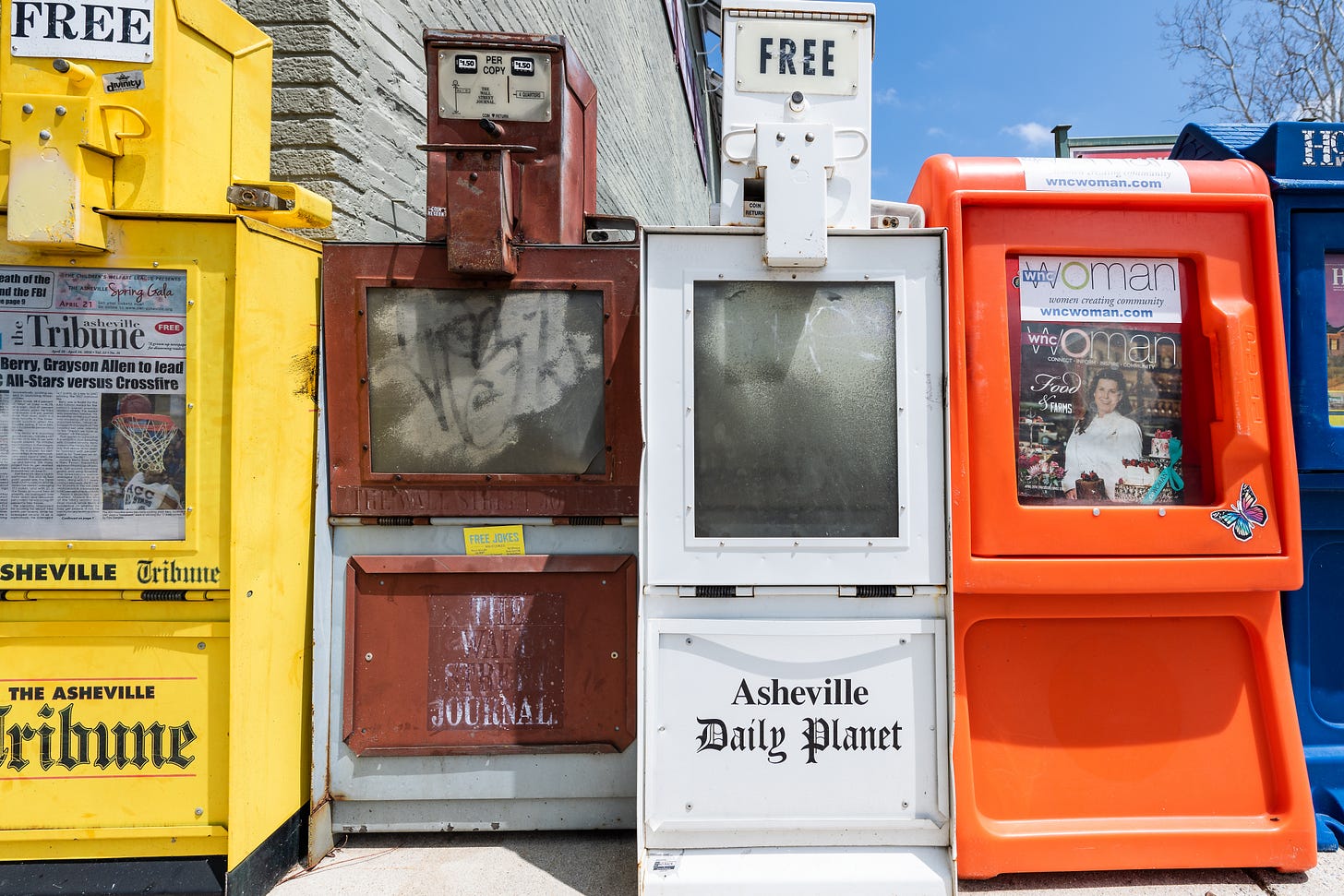J-schools are filling the local news gap. Is it enough?
Report calls universities to collaborate more

Short answer: No. Because it can always improve.
A new report calls for more collaboration between journalism schools to create more impact in filling the local news void.
Why it matters: Local journalism is declining at an accelerating pace. There are more than 130 student local news reporting programs with more than 10,000 stories published last year. Expansion of such programs is underway.
Eight key takeaways from the report by the University of Florida College of Journalism and Communications and the University of California, Berkeley’s Graduate School of Journalism.
Most large J-schools have a student-led local news program, with “professors of practice” at the helm.
A common denominator of these schools is having university-licensed public radio and TV stations. They should take advantage of this with distribution.
There are 19 university-led statehouse reporting programs as of March, with 18 more underway. HBCUs are located in or near state capitals, which means more expansion opportunities for them.
There is a potential for creating a story-sharing network given how national issues “have seeped down” to state politics. Think of the AP wire service or a newsletter compiling their work.
Before starting a community news site, it’s important to survey the community's needs.
An incubation approach can be applied to local news like what business or science schools do.
Successful programs should share best practices.
Student journalist pipeline and funding for those programs remain a challenge.
But what does collaboration look like?
Basic: Starting a newsletter sharing best practices. Hosting regular workshops and convening.
Intermediate: Working together on an investigative or an explanatory project of common interest. Exchanging faculty and students or creating working groups around particular topics.
Advanced: Collaborative, ongoing beat reporting. Data projects. Coverage of major national events such as elections or public health crises. Think of the Associated Press bureau model.
Dig deeper
I asked Project Director Janet Coats and Lead Reporter Caleb Wiegandt to discuss the study’s most interesting aspects, areas that needed to be addressed and their feelings toward the industry’s future. Here’s what they said:
Interesting things: For Coats, it’s the different models programs employ. She noted The Oglethorpe Echo, a local newspaper that the University of Georgia acquired and staffed with students.
Wiegandt’s favorite initiative was Temple University’s founding of community sites Kensington Voice and Germantown Info Hub. Both projects have different missions and approaches based on community needs — something Wiegandt admired.
Hopeful for the future: Coats, who has been in journalism for more than two decades, said she’s optimistic, given different efforts to save local news whether that be through groups like the Institute for Nonprofit News, LION Publishers, Online News Association and college programs.
“I think collaboration is going to be the future of local,” she said.
Staying local: Wiegandt, who worked at WUFT and other Florida newspapers, said the project’s reporting process made him emotional, especially when witnessing other students’ realization moments that they “could really do community news and make a great impact” without having to go national.
Further study: What could a collaborative model look like? What would it take to collaborate effectively? How can programs help each other by sharing expertise? A possible pipeline of community college journalism?
Read the full report here.
Story Spotlight:
Palestinian students covering university protests are underpaid and undervalued (Teen Vogue): Samaa Khullar, an investigative reporting fellow at Columbia University discusses the challenges experienced by Palestinian student journalists. A Palestinian herself, she wrote: “What’s most hurtful is that many of us have never been trusted as reporters on this topic and, likely, will still be attacked with charges of bias for anything we write about it.”
Featured Opportunities:
Students from all around the world can submit print, graphic design/photography, video or audio works to Courage RI’s Youth Media Contest by May 22.
The Online News Association is hosting a webinar on AI prompt writing May 22.
Nominations for Courage in Student Journalism and Student Freedom of Information awards from the Student Press Law Center are open until May 31.
Southern California Public Radio’s LAist is seeking a live programming & event intern.
COURIER 2024 Summer Internship Program’s application is open. It’s fully remote. The group has a newsroom in 11 states.
Maine Public’s application for its 12-month Emerging Voices Journalism Fellowship is open until June 2. The program aims to mentor underrepresented voices in the news industry.
Politico is accepting applications for its fall internships. There are openings in Washington D.C., New York and Sacramento.
High school students: Chalkbeats wants to hear your thoughts on the presidential election. Complete a form here.
I want to hear from you: What type of stories do you want to see in The Nutgraf? Have your school done any impactful local reporting recently that you’d like to share? Reach me at nutgrafnews@substack.com. I will respond! Also, please share.







